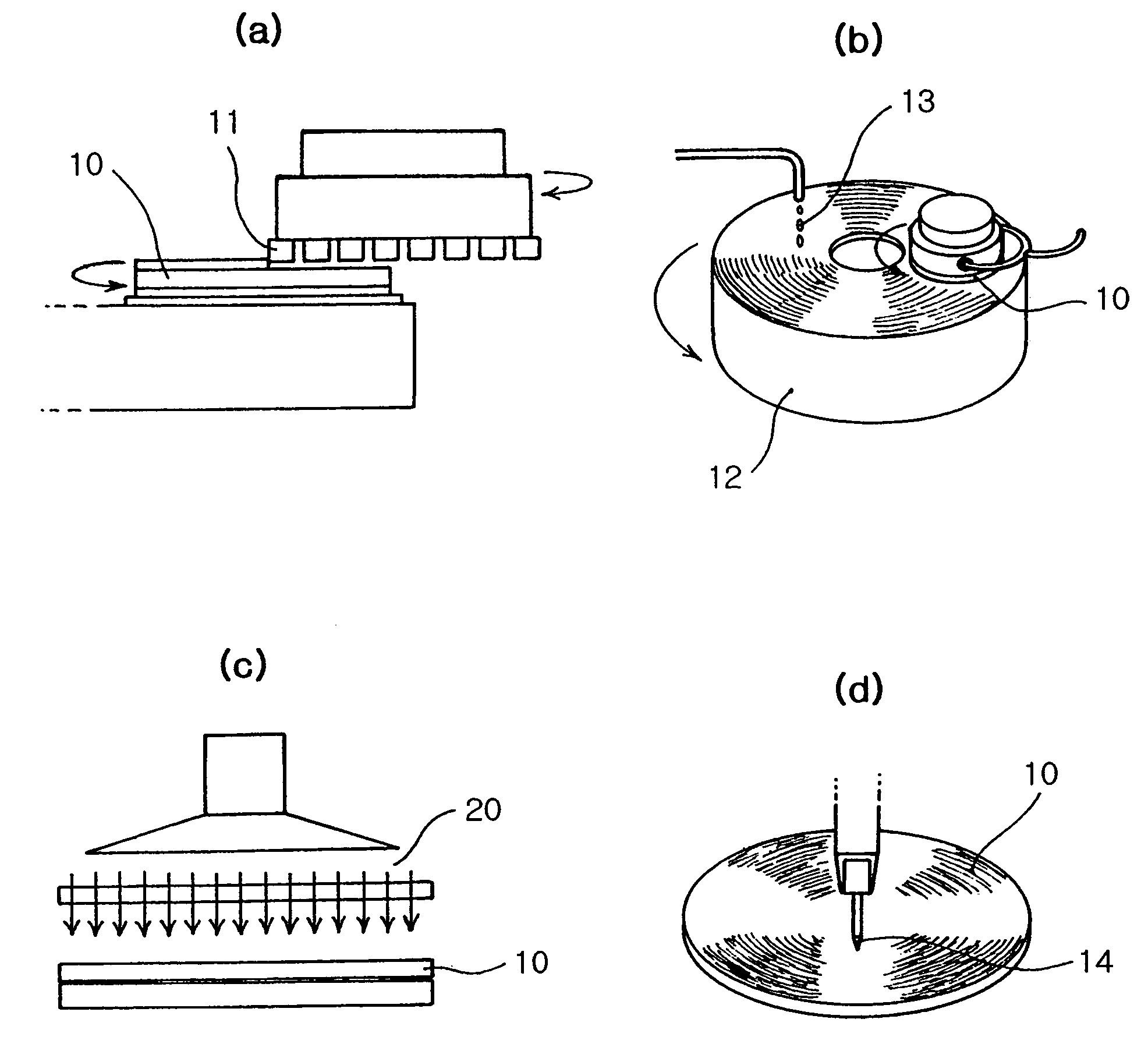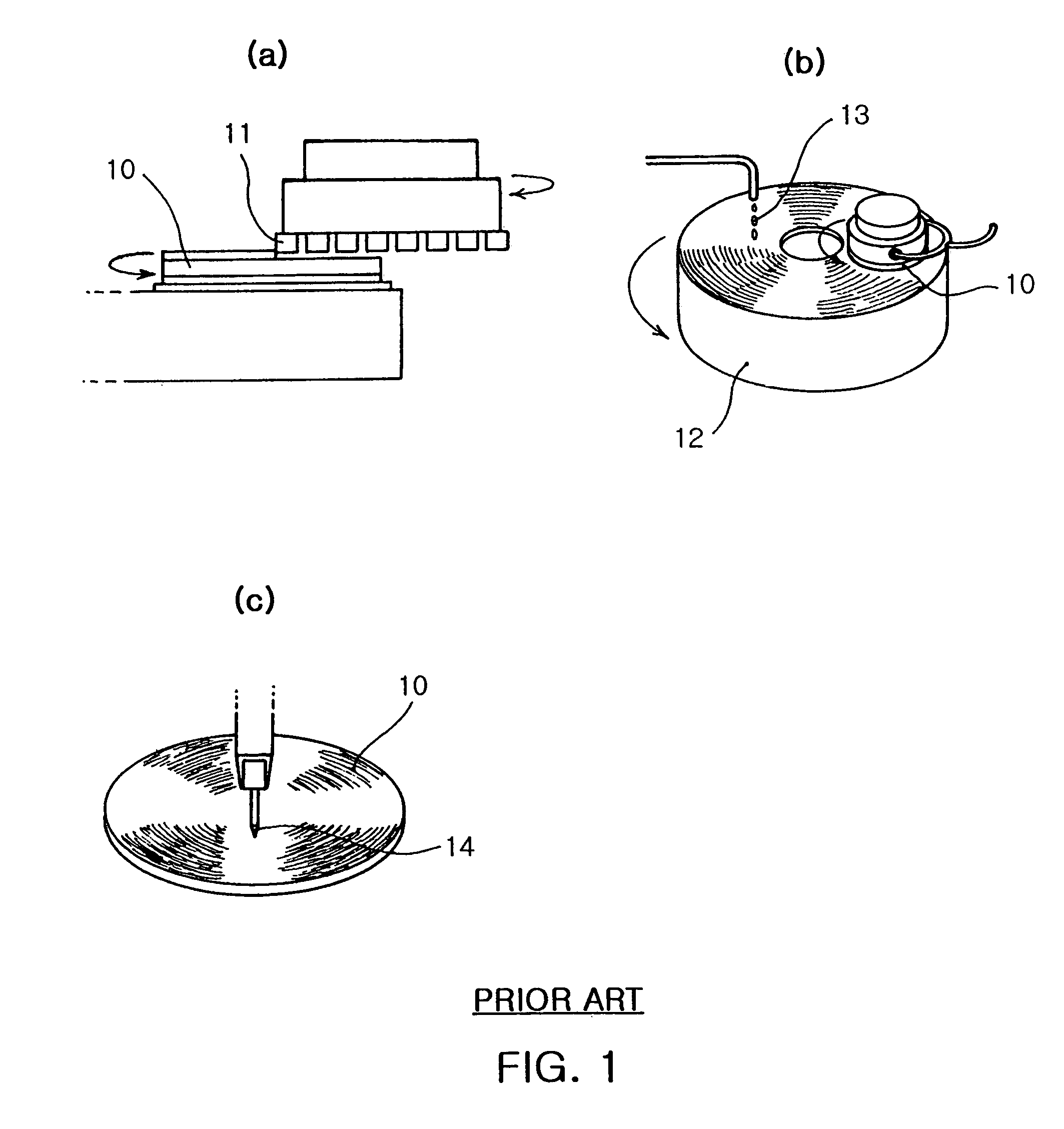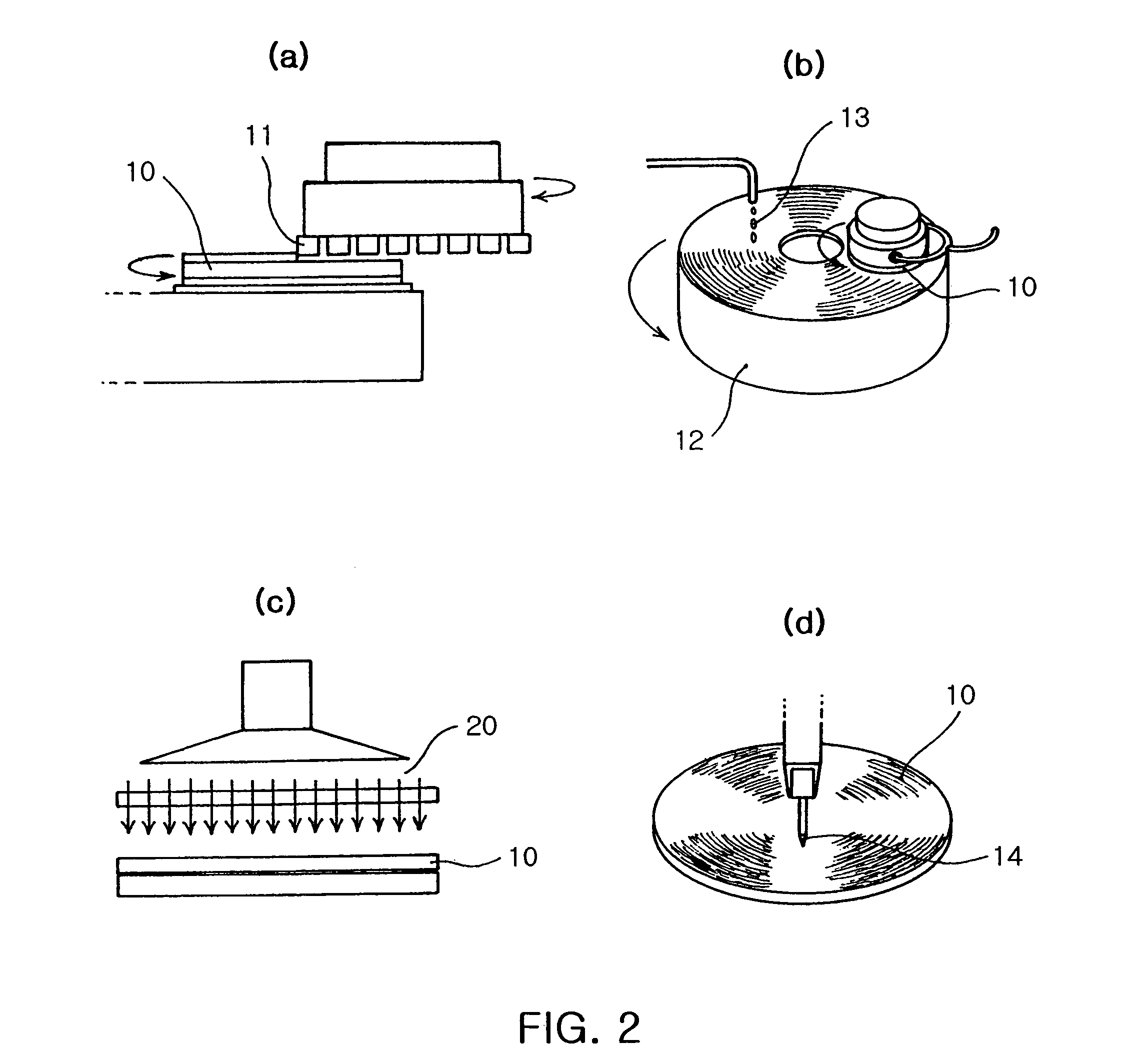Method for separating sapphire wafer into chips
a sapphire wafer and chip technology, applied in the field of sapphire wafer separation, can solve the problems of difficult to precisely scribe the sapphire wafer the surface of the polished sapphire wafer is not easily scribed using the diamond tip, and the inability to substantially display the total natural colors, etc., to achieve the effect of preventing the defect of the shape of the obtained chips, reducing the quantity of abrasion of the expansive diamond tip, and easy-
- Summary
- Abstract
- Description
- Claims
- Application Information
AI Technical Summary
Benefits of technology
Problems solved by technology
Method used
Image
Examples
Embodiment Construction
[0021]Now, preferred embodiments of the present invention will be described in detail with reference to the annexed drawings.
[0022]FIGS. 2a to 2d are schematic views illustrating a method for separating a sapphire wafer 10 into chips in accordance with the present invention. As shown in FIG. 2a, a rear surface of the sapphire wafer 10 is ground using a rotating diamond wheel 11 so that the sapphire wafer 10 has a designated thickness (for example, 115 μm).
[0023]As shown in FIG. 2b, the ground sapphire wafer 10 is lapped and polished. In the lapping step, the ground sapphire wafer 10 is mounted on a lapping plate 12, and then ground using a diamond slurry 13 having a particle size of 6 μm so that the sapphire wafer 10 has a designated thickness (for example, 8 μm). After the lapping step, the sapphire wafer 10 is polished using a diamond slurry 13 having a particle size of 3 μm smaller than the particle size of the diamond slurry 13 used in the lapping step in the same manner as the ...
PUM
| Property | Measurement | Unit |
|---|---|---|
| height | aaaaa | aaaaa |
| thickness | aaaaa | aaaaa |
| surface roughness | aaaaa | aaaaa |
Abstract
Description
Claims
Application Information
 Login to View More
Login to View More - R&D
- Intellectual Property
- Life Sciences
- Materials
- Tech Scout
- Unparalleled Data Quality
- Higher Quality Content
- 60% Fewer Hallucinations
Browse by: Latest US Patents, China's latest patents, Technical Efficacy Thesaurus, Application Domain, Technology Topic, Popular Technical Reports.
© 2025 PatSnap. All rights reserved.Legal|Privacy policy|Modern Slavery Act Transparency Statement|Sitemap|About US| Contact US: help@patsnap.com



